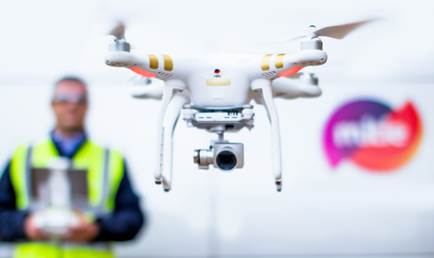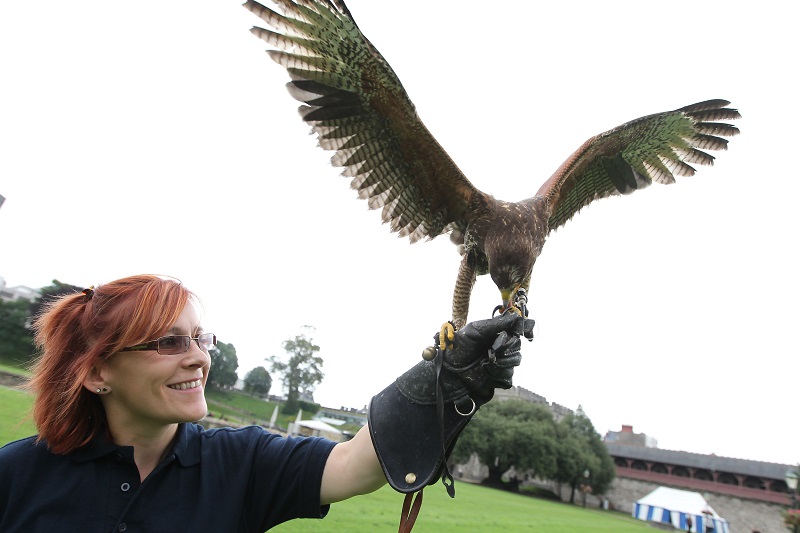Mitie - drone pest control inspection
Animals can establish themselves anywhere where they are undisturbed and have a regular food source, often in our urban spaces. One of the most prevalent issues in towns and cities is bird infestation on roofs, whether it's pigeon activity blocking up gutters, or nesting, birds.
One of the most common birds in urban areas is the seagull. Their increased presence on buildings can present a nuisance for landlords and occupants.
Seagulls in urban areas are difficult to remove once they have become established on a roof. They are loud, cause damage to structures, make a mess, scavenge food and can be territorially aggressive. Because they nest at height, monitoring their activities poses a challenge to pest controllers.
In 2016, Mitie's began to use drone technology as part of their pest control strategy. Drones offer exceptional visual access as they are able to fly and hover up to 400 ft in the air. They can photograph and accurately record activity with high quality 4K cameras, giving customers a more detailed inspection service.
Any images or videos that drones capture are instantly transmittable to the drone controller on the ground via, smartphone, laptop or tablet.
Working in this way, not only is roof surveillance easier, but it is also safer. Normally a pest control operative would have to inspect a roof in person. With that approach comes all the safety risks of working at height, including being attacked by the birds; however, by using a drone, the risk to personal safety is eliminated completely.
All drones are operated within Civil Aviation Authority (CAA) guidelines relating to unmanned aricraft.
Using drones in tandem with falconry deterrence gives an efficient combination of technology and working with nature. After identifying any nesting gulls with a drone, birds of prey can be used to deter gull activity. They help scare gulls away, sending a clear message that this is not a safe place for nesting or congregating.
A drone is then re-deployed to ensure that the infested space is pest free. Drone deployment, before and after the deterrent tactics is a more efficient means of confirming that the job is done and the pests have not returned, and the client can be assured that their building is bird free.
Images and content courtesy of Mitie.
[edit] Related articles on Designing Buildings Wiki
- Amazon flying warehouses.
- Approved inspector.
- Bird deterrent programmes.
- Construction drones.
- Construction site inspection.
- Drone regulations and safety.
- Paint by drone.
- Site information.
- Site surveys.
- Risk of rats in construction.
- Roofing defects.
- The use of drones in the construction of Crossrail.
- Uses of drones in construction.
- Using drones for inspection and survey.
Featured articles and news
RTPI leader to become new CIOB Chief Executive Officer
Dr Victoria Hills MRTPI, FICE to take over after Caroline Gumble’s departure.
Social and affordable housing, a long term plan for delivery
The “Delivering a Decade of Renewal for Social and Affordable Housing” strategy sets out future path.
A change to adoptive architecture
Effects of global weather warming on architectural detailing, material choice and human interaction.
The proposed publicly owned and backed subsidiary of Homes England, to facilitate new homes.
How big is the problem and what can we do to mitigate the effects?
Overheating guidance and tools for building designers
A number of cool guides to help with the heat.
The UK's Modern Industrial Strategy: A 10 year plan
Previous consultation criticism, current key elements and general support with some persisting reservations.
Building Safety Regulator reforms
New roles, new staff and a new fast track service pave the way for a single construction regulator.
Architectural Technologist CPDs and Communications
CIAT CPD… and how you can do it!
Cooling centres and cool spaces
Managing extreme heat in cities by directing the public to places for heat stress relief and water sources.
Winter gardens: A brief history and warm variations
Extending the season with glass in different forms and terms.
Restoring Great Yarmouth's Winter Gardens
Transforming one of the least sustainable constructions imaginable.
Construction Skills Mission Board launch sector drive
Newly formed government and industry collaboration set strategy for recruiting an additional 100,000 construction workers a year.
New Architects Code comes into effect in September 2025
ARB Architects Code of Conduct and Practice available with ongoing consultation regarding guidance.
Welsh Skills Body (Medr) launches ambitious plan
The new skills body brings together funding and regulation of tertiary education and research for the devolved nation.
Paul Gandy FCIOB announced as next CIOB President
Former Tilbury Douglas CEO takes helm.
UK Infrastructure: A 10 Year Strategy. In brief with reactions
With the National Infrastructure and Service Transformation Authority (NISTA).

























